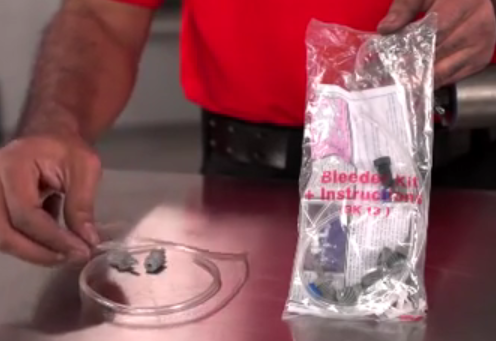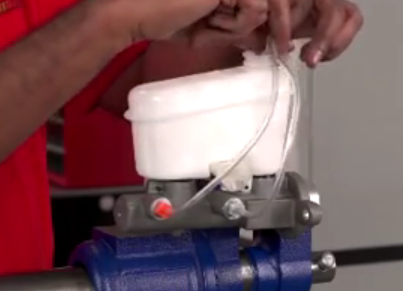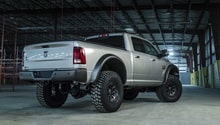Dodge Ram 2002-2008: How to Replace Brake Master Cylinder
The master cylinder is the leader of your brake system. If it doesn't make the pressure your system needs, then it will not stop. Learn how to replace this cylinder here.
This article applies to the Dodge Ram (2002-2008).
The master cylinder on your truck makes braking happen. By creating pressure in your brake system, the calipers are made to squeeze on the rotors and the brake cylinders push the brake shoes against the drums. It is a hydraulic system that works together to use hundreds of pounds of pressure created by the master cylinder to stop your three ton truck. If it is not working like it is supposed to, then it is unsafe and probably a little, or lot, scary. Follow along to see how to replace the brake master cylinder in your truck.

Materials Needed
- Ratchet and short extension
- 15mm deep socket
- Flat and Phillips screwdriver
- Tubing wrench
- Plenty of rags
- Appropriate brake fluid for you truck
- Bench vise
- Fender cover
- Turkey baster
Pro Tips
- Brake fluid is very nasty stuff. NEVER let brake fluid get on any painted surface of your truck since it will take the paint off to the bare metal.
- It is best to get the brake fluid taken care of before taking any lines loose. Use lots of rags to catch the fluid and a fender cover to protect your paint.
- You can use a turkey baster to suck the fluid out of the master cylinder and get rid of it.
Step 1 – Remove brake lines
There will be two metal brake lines coming out of the master cylinder. Nuts on the end of the metal lines screw into the master cylinder. Using a tubing wrench, loosen the nuts. Catch any brake fluid with rags.

Pro Tip
You loosen the brake lines before the nuts that hold the master cylinder on since they are quite tight. You do not have to totally remove the lines now especially if you have not emptied the master cylinder of brake fluid.
Step 2 – Remove master cylinder
Your master cylinder is bolted to the power brake booster. There are two 15mm nuts that you must remove to get it loose.

Now you can remove the old master cylinder.
Pro Tip
Your new or rebuilt master cylinder may not come with a new reservoir. If it does not, then remove the one from your old master cylinder and clean it well to get ready to reuse it. Install on new master cylinder.
Step 3 – Bench bleed the replacement master cylinder
Your replacement master cylinder should come with a bench bleeding kit.

Screw the plugs from the kit into each master cylinder port. Run the hoses into the reservoir.

Now fill the reservoir with fresh, clean brake fluid. It is important to keep the line buried in, and the reservoir full of, fluid. Using a large Phillips screwdriver, push in on the end of the piston deeply. Bubbles will be pushed into the reservoir. Continue pumping until no air bubbles remain. This can take up to 50 pumps. Leave the bleeding kit on the master cylinder for the next step.

Pro Tip
You will save yourself a lot of time, brake fluid, and hassle if you bench bleed the master cylinder before installation.
Step 4 – Install master cylinder
Installation is the reverse of removing it. Tighten the nuts to the booster first. Just before you hook the metal lines up, remove the plastic bleeder and quickly attach the metal line. Tighten each metal line with your tubing wrench securely.
Step 5 – Bleed brake system
Though you bench bled the master cylinder, the rest of the system must be bled now since no matter how careful you were, air did get into the system. You probably will not be able to get to the bleeder screws at each wheel without jacking your truck up. If you do have to jack your truck up, use the appropriate jack and jack stands to do so.

Related Articles:
- How to Jack Up Your Truck - Dodgeforum.com
- How to Change Brake Fluid - Dodgeforum.com
Now your brake system should feel and stop like new. Congratulations on a job well done!
Pro Tip
Since you are bleeding your system, it is a good time to cycle your old brake fluid out of it. Brake fluid has an affinity to water and creates a type of acid that eats your system up.
Related Discussions
- DIY Power Brake Booster Replacement - Dodgeforum.com
- Any Candidates for Replacement of Master Cylinder and Brake Booster? - Dodgeforum.com
- 2004 Ram Brakes - Dodgeforum.com






